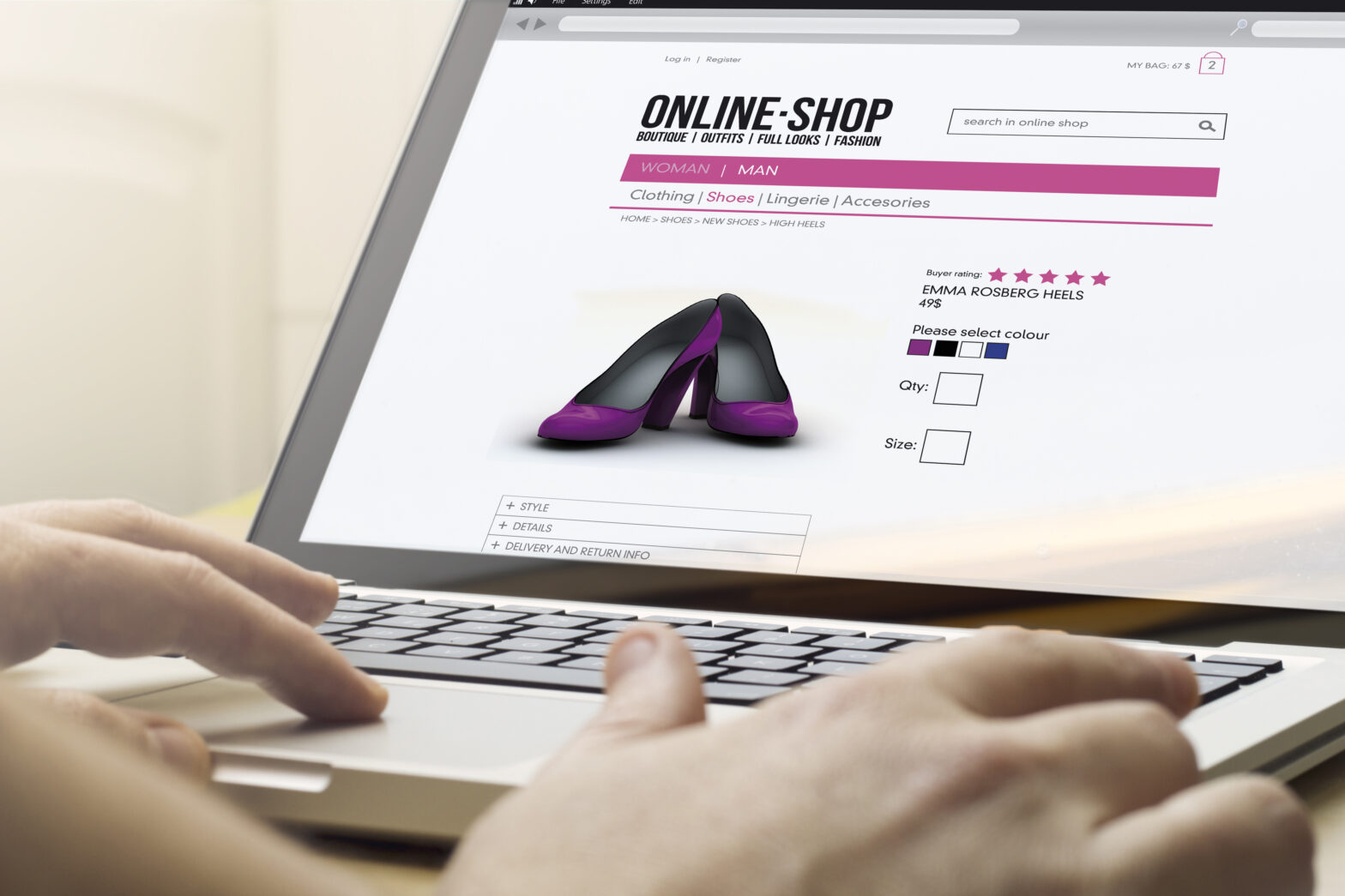Setting up an online store may be an effortless procedure but make no mistake, running a small e-commerce business is no easy feat. As someone who has spent a career providing products and services to millions of online sellers, first at PayPal and now at ATG Media, the parent company of i-bidder and BidSpotter, I am well aware of the ongoing challenges faced by internet retailers, and what sets apart those that fail from those that thrive. Below is my advice to e-commerce entrepreneurs on how to establish a successful online business.
1. Determine whether there is a market for your product
Trying to determine if there is a market is not always easy. But there are multiple ways to do it. The internet is full of free research that talks about industries, market segments, consumer buying trends and much more. Governments publish many statistics as well. Going to events where people may use your type of product or service is another venue to explore. And, if your product is for direct consumer usage, then friends, family, your neighbours, children, and random passersby on the train or plane (all of which I’ve used!) are viable.
There are three main elements you will need to establish the size and nature of your market. Ask yourself the following: Who will be buying my inventory? How much of it will they buy? How much of that will be bought online? In answering these, you are establishing the viability, sustainability and likely longevity of your small e-commerce business.
2. Look at your competition
The big questions here are addressing where there is room for a new entrant and how you can gain market share. So in other words: is there a slice left and how can you take more of other people’s slices. You may also want to look at any alliances you may want to make.
The digital marketplace is teeming with competition so, whether you are a small e-commerce business or a seller on eBay or Amazon, to be successful you must ask yourself what you offer that gives you an edge over your competitors. Specifically, what will make someone choose your product?
Having a strong mission statement that guides what you do can help. Your ‘edge’ needs to be understandable, communicable and unambiguous. Think about your audience, what their specific need is and how your brand fulfils that in a way that your competitor doesn’t. If it’s not your product, it could be your user experience, customer service or something entirely different. Once you’ve nailed it, shout from the rooftops and make sure your customers know what makes you better.
We deal with a huge audience of online sellers on i-bidder.com. I find that the successful ones are those who have a crystal clear idea of what they are selling. Such customers tend to focus their efforts on streamlining their product sourcing and marketing efforts, so their products reach the relevant audience who have a need for them.
3. Have a sound product sourcing strategy
Never sit still or think that your source of supply is a sure thing for the future. An e-commerce fail 101 is having all your eggs in one basket when it comes to product sourcing. A common mistake is to find one decent supplier and fail to shop around for additional options, despite how risky this can be. Your supply chain should be diversified and constantly under review so that if one supplier fails, you have back up so that your business doesn’t crumble.
A lot of smart resellers in the UK currently use online auction marketplaces to source stock to sell online. On these platforms you can buy anything from car parts to hair rollers and given the sheer number of lots being auctioned on a daily basis, the supply is consistently reliable. What’s more, online auction platforms collate hundreds of auctions in different countries so you’re getting that diversity without having to do the leg work.
Online auctions are also a good way to start out if you don’t have established wholesaler contacts and are looking for reliable sources of profitable stock. They allow you to bid on a wide range of products, either individually or in bulk lots, at prices you decide.
4. Market your small e-commerce business
More often than not, it takes more than just a good product to win sales and it’s not uncommon for small e-commerce business entrepreneurs to expect their product to sell itself and later wonder why no one is buying from them.
The key is to have a clear picture of your target customer and then build a marketing strategy to reach them effectively: Where are they? What is their language? What do they care about? Essentially are you visible to them, understandable, heard and relevant?
A cost-effective place to start is by optimising your website to be visible through organic searches. Do this by listing the relevant and popular keywords used by your customers in searches and ensure these appear in your online content, titles and meta descriptions.
And don’t stop just with organic search – invest a portion of your marketing budget in paid search activities. An advertising programme built on pay-per-click (PPC), remarketing and display advertisement online can drive retention and help bring in incremental new customers.
Investing in a CRM is another sure-shot way to build strong customer relationships and be heard, relevant and understood. A well-executed CRM programme would allow you to segment and target customers based on their behaviour on your website. Through a centralised list of email addresses, you can then send relevant communications to your customer segments, such as newsletters and deals, and track responses and engagement. After all, it is not just about acquiring new customers, but securing repeat sales from those you already have!
John-Paul Savant is CEO of ATG.
Further reading on e-commerce
Planning a budget for an e-commerce project
It’s never too early to get your ducks in a row when it comes to planning a budget and strategy for your B2B e-commerce website. With good reason too; the masses are now more organised than ever before, meaning the competition is getting stiffer all the time.
The meteoric rise of the DIY e-commerce website builder is showing no signs of losing momentum. Providers are going to greater lengths to provide a flat-pack service, offering plenty of integrated and easy-to-understand features for an online shop.
All in all, the features are tailored to fast track an absolute novice’s path to online success.
This change has got even experienced and established e-commerce traders looking over their shoulders. So, with that in mind, we put together a run-down to help you prepare your B2B budget and keep up with or even stay ahead of the competition.
Creating a budget for a B2B e-commerce site generally has four stages: information gathering, assessing priorities, assigning numbers, and the final prioritisation.
The first two stages will eat up the most of your time, however, they are the most vital. For this reason, we’ve chosen to focus on the first two stages and talk about the types of information you should gather and what to assess when it comes to your priorities.
Information gathering
For your overarching company targets, think about these questions:
What are your overarching company targets?
In what way can your website help you achieve those targets?
And contemplate these questions to narrow down your B2B benchmarks:
How has your conversion rate changed year after year, and where does it stand now?
How has your average order value changed each year, and what is it now?
What percentage of your total sales is your website responsible for?
How well does your site support dealer relationships? If your site doesn’t use dealers, are you considering it as an option?
Assessing priorities
After discerning what your website can do to help you achieve your overarching B2B goals, you can start going into the finer details. Split your strategy into two major parts: hosting and marketing.
Hosting
Respond to these questions to better understand how well your hosting is performing:
What’s your site’s loading speed? You can find out quickly at Web Page Test.
Does your site lag in peak traffic times, and therefore negatively impact your users’ experience?
Do you ever suffer from downtime?
When constructing your budget, think about how your hosting environment might change to accommodate higher traffic. You can do this by monitoring your growth in user sessions in the previous year from Google Analytics in order to project growth. You can share your findings with the team at your hosting provider—they should offer insight to help plan for growth in the next year.
Marketing
This is where you need to ask yourself questions about three factors: content, email, and SEO. To begin with content, consider:
Does your site feature catalogues and manuals?
Do you dedicate enough hours to making sure that these documents are always up to date and available?
For email:
How much traffic do emails generate for your site?
Do you use trigger emails?
And for SEO:
How much organic and paid traffic does your site get from search engines?
Does your site appear high up in search engine results pages when you run searches for important keywords related to your field?
You might discover that these questions require a lot of action, and perhaps recruitment of staff to resolve them. Discuss your results with your colleagues and peers and determine which areas are most pressing, and which areas can lead to the most benefits.
Moving forward
Now that you have established your priorities all that’s left to do is pass on your plans with your stakeholders and partners and request quotes from them.
After you receive your quotes and you understand the cost, you can weight up your priorities again, now that you know the full extent of their fiscal consequences.
The result will be a budget that will go a long way towards helping you achieve your company’s B2B ecommerce aspirations.
If you would like more advice and inspiration for your e-commerce site, try Why the email marketer isn’t dead.





